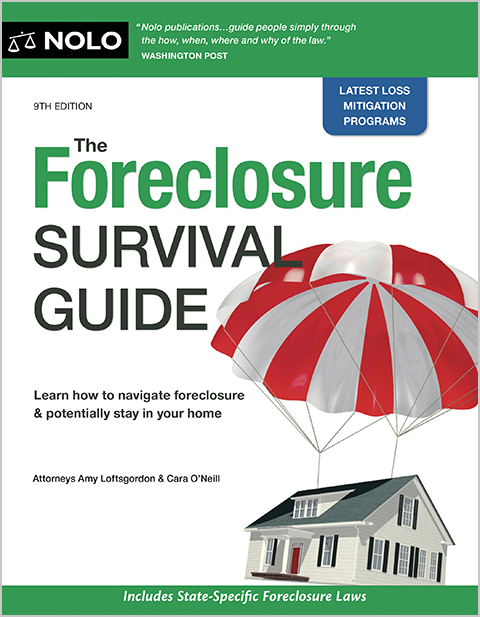Understand the difference between a breach letter (notice of default letter) and an FDCPA validation notice, why each matters, and what steps to take when you receive one
If you're behind in your mortgage payments and facing foreclosure, you'll likely receive important notices from your lender or loan servicer. One common notice is the breach letter (sometimes also referred to as a "notice of default" letter), which formally informs you that your loan is in default and explains what you need to do to cure the delinquency. In addition, you might receive a Fair Debt Collection Practices Act (FDCPA) validation notice from the loan servicer. Or, in some cases, you might get a combination letter that fulfills both mortgage breach letter and debt validation notice requirements.
Understanding the differences between these notices, what information they must include, and your rights upon receiving them can help you protect your home from foreclosure. If the notice you receive doesn't comply with the law, you might have a defense to a foreclosure.
What Is a Breach Letter (Notice of Default)?
Mortgages and deeds of trust, especially the official Fannie Mae/Freddie Mac security instruments, often contain a clause that requires the lender (or the servicer on its behalf) to send a notice, commonly called a "breach letter," informing the borrower that the loan is in default before accelerating the loan and proceeding with foreclosure. Sometimes, the mortgage or deed of trust will refer to this requirement as a "notice of default."
Breach Letter Requirements: What It Must Include
Typically, under the terms of the loan contract, the notice must specify the following:
- the default
- the action required to cure the default and reinstate the loan
- a date, usually not less than 30 days from the date the notice is given to the borrower, by which the default must be cured, and
- that failure to cure the default on or before the date specified in the notice may result in acceleration of the debt and sale of the property. (To find out the exact notice requirements in your situation, check the mortgage or deed of trust you signed when you took out your home loan.)
What to Do If You Get a Breach Letter
To avoid foreclosure, the borrower must bring the loan current by paying the total past due amount shown in the letter before the 30 days expire. Also, some states have a law allowing a borrower facing a foreclosure to reinstate the loan by a specific deadline. And many mortgages and deeds of trust contain language giving borrowers a specific amount of time to get current on the loan.
If the 30-day time period expires and the borrower hasn't paid the specified amount to bring the loan up to date or worked out another option to avoid foreclosure, foreclosure proceedings will likely begin.
What Is an FDCPA Validation Letter?
The FDCPA is a federal law that protects consumers from abusive collection practices by debt collectors and collection agencies. An FDCPA validation letter, also called a "debt validation notice," is a legally required communication that debt collectors must send to consumers in their initial contact with the consumer or within five days after their first contact.
When Is an FDCPA Letter Required in a Foreclosure?
While originally aimed at collection agencies, the FDCPA also applies in certain foreclosure contexts. Whether the FDCPA applies to foreclosures generally depends on whether the foreclosure is judicial or nonjudicial.
- Judicial foreclosures. Judicial foreclosures are usually, but not always, viewed by courts as subject to the FDCPA because creditors can generally get deficiency judgments.
- Nonjudicial foreclosures. In a unanimous decision, the U.S. Supreme Court determined in the case of Obduskey v. McCarthy & Holthus LLP, No. 17-1307 (March 20, 2019) that the FDCPA doesn't generally apply to firms pursuing nonjudicial foreclosures.
FDCPA Validation Notice Requirement Under Regulation F
Under Regulation F, which implements the FDCPA, the notice must contain, among other things:
- the amount of the debt, including all interest, late charges, attorneys' fees, and other charges
- the name of the creditor to whom the debt is owed
- a statement that unless the debtor, within 30 days after receipt of the notice, disputes the validity of the debt, or any portion thereof, the debt will be assumed to be valid by the debt collector
- a statement that if the debtor notifies the debt collector in writing within the 30-day period that the debt, or any portion thereof, is disputed, the debt collector will obtain verification of the debt or a copy of a judgment against the debtor and a copy of such verification or judgment will be mailed to the debtor by the debt collector, and
- a statement that, upon the debtor's written request within the 30-day period, the debt collector will provide the debtor with the name and address of the original creditor, if different from the current creditor. (12 C.F.R. § 1006.34, 15 U.S.C. § 1692g (2025).)
What to Do If You Get a Validation Letter
If you get a debt validation letter, carefully review the information provided. If you think the debt is incorrect or not yours, respond within 30 days with a written dispute asking for more information or verification.
Your Rights If the Validation Letter is Incomplete or Incorrect
If the validation letter doesn't have the required information or has errors, you have the right to dispute the debt.
How to Dispute or Request More Information
To request verification, write a letter to whoever sent the letter (likely the servicer) stating that you dispute the debt and are seeking documentation that proves their claim. In your letter, include a request for the original creditor's name and address. The Consumer Financial Protection Bureau (CFPB) offers a sample debt validation letter you can customize for your situation. Select the "I need more information about this debt" template on their website.
Keep copies of all written communications between you and the loan servicer.
When You Might Receive Each Notice
In most cases, a foreclosure can't start until the borrower is more than 120 days delinquent. So, lenders and loan servicers tend to send the breach letter around the 90th day of the delinquency.
If the FDCPA applies to the foreclosure, the party attempting to collect the debt must provide the required information in the initial communication or within five days from the initial contact with you. (15 U.S.C. § 1692g(a), 12 C.F.R. § 1006.34(a) (2025).)
Key Differences Between Breach Letters and Validation Letters
A breach letter tells you that your mortgage is in default, how to cure the default, and the consequences of failing to cure, including acceleration of the loan and foreclosure. The mortgage or deed of trust contract requires a breach letter (that is, sending this letter is a contractual obligation.)
On the other hand, a debt validation letter provides information about your rights under the FDCPA concerning debt collection, including your right to dispute the debt. Federal law requires this kind of notice.
Can the Same Notice Cover Both Requirements?
Sometimes, the FDCPA validation notice will be combined with the breach letter. Other times, it might be a separate letter, or, in some cases, it might be included with the complaint for foreclosure. In any case, you should read these communications carefully to understand your rights and obligations.
These notices will likely arrive in the mail so be sure to open any letters you get from your lender or loan servicer.
Combined Notices: What Consumers Should Watch For
If you receive a combined breach and validation notice, review the notice to ensure it includes all of the necessary information required for both types of communication, including how to avoid foreclosure and dispute the debt.
When to Talk to an Attorney
If you're facing a foreclosure and think the lender or servicer violated the loan contract by not sending a breach letter or sent an incorrect letter or an incomplete letter (or is violating the FDCPA), consider talking to an attorney to find out options in your particular circumstances. This failure or violation can be a strong defense to a foreclosure, and having legal counsel is especially important when notices are flawed or your rights have been violated.
- What Is a Breach Letter (Notice of Default)?
- What Is an FDCPA Validation Letter?
- When You Might Receive Each Notice
- Key Differences Between Breach Letters and Validation Letters
- Can the Same Notice Cover Both Requirements?
- Combined Notices: What Consumers Should Watch For
- When to Talk to an Attorney

